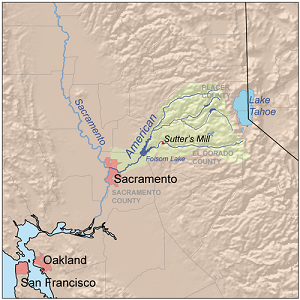Apulia (Puglia) is located in southern Italy; it borders the Adriatic
Sea in the east, the Ionian Sea to the southeast, and the Strait of Otranto and
Gulf of Taranto in the south. Its southernmost portion, the Salento peninsula,
forms a high heel on the boot of Italy.
Art Cities
 Lecce
Lecce
is known as the Baroque city and the Florence of the south because of its
magnificent architecture constructed with the famed
Lecce Stone.
Itinerary:
Porta Napoli; Piazza del Duomo Cathedral and Belfry, Episcopio and Seminary
Palace; Sant’Irene Church; Piazza Sant’Oronzo and Amphitheater, Sedile, Chiesa
di San Marco Church and Sant’Oronzo Column; Santa Croce Basilica; Celestini
Convent.
Barletta
once a fortress, the Barletta’s castle was once surrounded by the sea. The
historic center visit includes: Santa Maria Maggiore Cathedral; Eraclio’s
Colossus, Santo Sepolcro Basilica and large bronze statue; Marra Palace, the
Orsini family residence; Porta Marina, a unique example of a city wall gate; Cantina della disfida, the legendary
battle between Italian soldiers of fortune led by Ettore Fieramosca and the
French Army.
Trani
the castle is the best preserved and most important among those erected by
Frederic II. The Cathedral of San Nicola, the queen of cathedrals in Apulia, was
built along the seashore, as was the castle, with a Latin cross layout, is
divided into three naves and twin columns, a unique feature among the region’s
Romanesque churches. The historic center itinerary included a visit to the
Jewish quarter and two ancient synagogues.

Lucera
this ancient town boasts one of the largest historic centers in Italy which
holds the Cathedral of the Assumption, built on the foundations of an ancient
mosque. Trani’s highest hill contains the Roman acropolis and a Swabian-Angevin
fortress; the latter is a major archeological that features neolithic huts,
Roman ruins and from a Frederic II palace as well as the remnants of the medieval
era Church of St Francis. Finally, the Roman Amphitheater, Apulia’s most
important Roman era structure.
Bari the most important city on the Adriatic Sea
presents a medieval historic center that contains the city’s most important
monuments, folkloristic features and the imposing San Nicola Cathedral.

Altamura
is characterized by a series of cloisters, including a Jewish one. Its
religious history is quite unique in that for seven centuries, beginning with
the Frederic II era, Altamura’s bishops were appointed by the prevailing secular powers; the Lateran
Pact of 1929, governing relations between the Italian State and the Vatican,
returned this specific power to the papacy. A major attraction is a visit to 15th
Century stone oven that produces the classic Altamura bread and the Apulian
focaccia.
Taranto
can be defined as 2700 years of history on an island-historic center between
two bodies of water, the Mar Piccolo and the Mar Grande. This unique setting
contains a Greek acropolis, Roman and Renaissance architecture and baroque
residences. Among Taranto’s principal mounuments: the Aragonese Castle, the
Doric Temple’s column, S. Cataldo Cathedral and the Convent of San Domenico.
UNESCO Sites
Castel
Del Monte
Frederic II’s octagonal structure is unique in form and
function. The form presents architectural considerations as well as still
mostly unexplained symbolisms. An exterior and interior tour focus on the times
when the castle was built as well the history of the emperor who commissioned
it.
Alberobello
the Trulli trace their origin to a 15th Century edict by the Kingdom
of Naples requiring tribute for every new settlement. Alberobello’s owners, the
Counts of Conversano, instructed their subject to build temporary structures, not subject to any form of taxation. Furthermore,
these stone structures required self-supporting domes as rooftops, made of
superimposed circles of stones; hence the peculiar cusp shape.
Monte Sant’Angelo is located in Apulia’s Gargano promontory. The medieval quarter
is characterized by terraced houses, traces of its Longobard period and the
Sanctuary with the cult of the Archangel Michael who, according to tradition,
appeared in a grotto. Also, the Norman Castle, the historic center and St’
Michael’s Basilica.
Otranto situated on Salento’s
Adriatic Coast, is Italy’s easternmost town. With Messapi, Roman, Byzantine and
Aragonese roots, it developed around its imposing castle and Norman Cathedral.
Additional points of interest: the defensive walls and gate, the historic
center, s. Peter’s Church, the Cathedral with Martyrs’ Chapel, vault and floor
mosaics.
Archeological Museums
Egnazia
Museum and Park is located between an olive grove and the sea. Partially
excavated, it contains mostly Roman era finds: Via Traiana, Civil Basilica, oriental
divinity shrine, an amphitheater and a colonnaded square. The museum is divided
into 7 areas that illustrate the town’s history from bronze era huts to the
medieval period that ended in the 13th Century, when Egnazia was
abandoned by its population.
The
Bisceglie Dolmen is Italy’s most recognized prehistoric
monument. It consists of a two meter high quadrangular cell made of three
vertical stone slabs that hold a larger fourth slab acting as a roof. The left
slab has two openings, probably for the flow the sacrificial victims’ blood. The
cell has an external corridor – dromos
- with small stone slabs. Among the cell’s finds: charred animal bones, human
skeletons, various plates and utensils.
Taranto
Archeological Museum the MARTA collections lead to a complete
picture of the city’s ancient history. Emphasis is on Greek Taranto’s funeral
culture and the finds uncovered in the city’s necropolis and Greek society: theater,
games, symposia and artistic expressions. Also, a review of the Roman era as
illustrated by the museum’s mosaic floors.










































